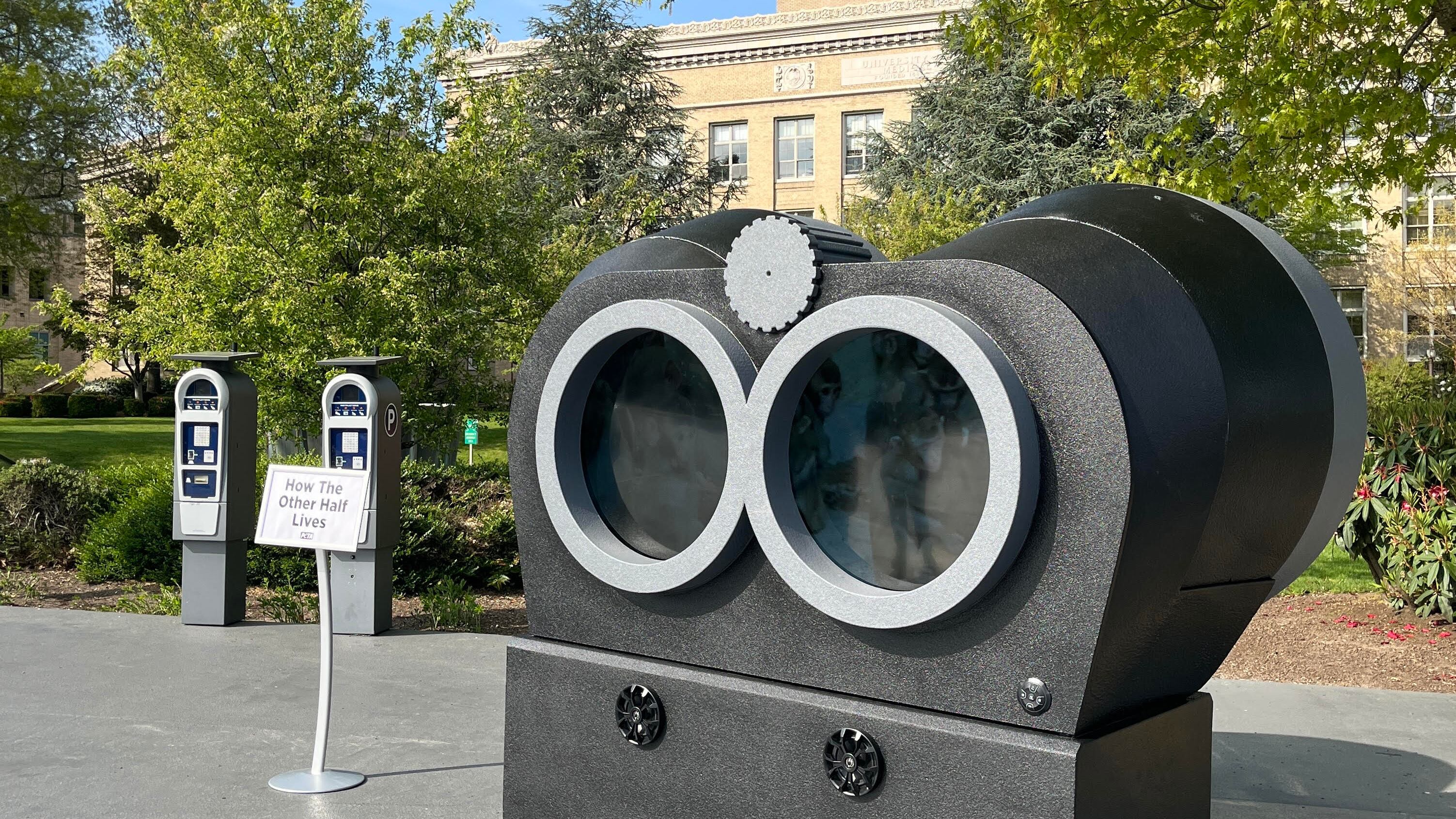Oregon Health & Science University released a 2,000-word rebuttal today to critics of its primate center, arguing that research done there is critical and productive, and that the 5,000 animals at the Hillsboro facility live in humane conditions.
Two groups, People for the Ethical Treatment of Animals and the Physicians Committee for Responsible Medicine, have been bombarding OHSU with television ads and letter-writing campaigns, urging regulators to require closure of the primate center before granting OHSU permission to buy Legacy Health.
PETA and PCRM argue that funding for the Oregon National Primate Research Center, one of seven in the nation, would be better spent on human patients at OHSU and Legacy, both of which have lost money in recent years. Most of the primate center’s $60 million budget comes from the National Institutes of Health.
OHSU says the animal research cash can’t be diverted to human care.
“The Oregon National Primate Research Center is mostly funded by highly competitive, research-specific grant awards from the National Institutes of Health; research foundations such as the Bill and Melinda Gates foundation; industry partners; and philanthropy,” OHSU said. “These funds can only be used for specific research projects. Those funds are not being taken away from patient care and education, nor can they be repurposed for those uses if the center were to close.”
Critics have also suggested that OHSU could sell the center’s 200 acres of land and all the structures for as much as $250 million to bolster its balance sheet.
“OHSU does not control the disposition of the land on which the Oregon National Primate Research Center resides,” OHSU says. “The NIH funds the primate center’s facilities and operations. NIH approval is required for any sale of the property and would likely limit the proceeds available to OHSU.”
Closing the primate center would cost $100 million, OHSU says.
In terms of animal living conditions, OHSU says most of its macaques and other nonhuman primates live outside with their family groups. They are cared for by veterinarians who “form deep bonds with them, providing the best possible care, including abundant nutritional food, lots of enrichment in the form of treats, puzzles and touch screens, and frequent interaction.”
OHSU’s statement comes two days after PETA set up a 500-pound pair of faux binoculars outside the university’s library to “show how the other half lives.” One eyepiece of the binoculars shows video of macaques in the wild, cavorting, gathering fruit, and caring for their young. The other shows macaques in small cages, rocking back and forth, burying heads in hands, and shaking at the bars.
“Through these lenses, the public sees what OHSU carefully hides: monkeys trapped in barren metal cages barely bigger than their own bodies, living in fear, and discarded like used paper towels, while their wild kin thrive in rich forests, surrounded by family,” PETA senior science adviser on primate issues Dr. Lisa Jones-Engel said in a press release. “PETA urges OHSU to end this cruelty, shut down its failed primate center, and shift to modern, animal-free research.”
Another problem at the primate center is disease, Jones-Engel says.
A 2023 paper in Frontiers of Immunology determined that macaques at the Oregon primate center had been infected with a drug-resistant staphylococcus bacteria similar to Methicillin-resistant Staphylococcus aureus, or MRSA.
MRSA is common in captive macaques colonies, researchers said, but staphylococcus that’s resistant to another drug, vancomycin, hadn’t been seen in macaques before it was detected at the Oregon primate center. The VRSA bacteria was found in Mauritian macaques that the center had imported, researchers said.
MRSA and VRSA are dangerous to laboratory staff, researchers said. “MRSA colonized macaques are both an occupational risk, with documented suspected cases of zoonotic transmission to exposed staff, and a risk to their clinical health.”
The macaques were more susceptible to disease than their human handlers, researchers said, because “they were part of a project that involved significant immunosuppression, surgically implanted indwelling catheters, surgical biopsies, and transportation to a human healthcare facility.”
Most often, MRSA causes skin infections, but it can also infect the bloodstream, lungs and bones. MRSA-based blood infections can be fatal.
Another study, in the journal Microbiology Spectrum, found Corynebacterium diphtheriae, the bacterium that causes diphtheria at the primate center.
“We identified active transmission of C. ulcerans among both indoor- and outdoor-housed rhesus macaques, and it appears that toxigenic Corynebacteria may have been circulating at the Oregon National Primate Research Center for several decades," researchers wrote.
OHSU didn’t return an email seeking comment on the diseases.
As for promising research at the primate lab, OHSU says scientists there confirmed the importance of critical nutrients for retina and brain that are now put into infant formulas. Other research has advanced treatments for multiple sclerosis, Alzheimer’s disease, and Parkinson’s, OHSU said.
In a contentious claim, OHSU said that Oregon primate studies “were key to the development of COVID-19, Zika and HIV vaccines and treatments.”
Dr. Neal Barnard, president of the Physicians Committee for Responsible Medicine, says that touting an HIV vaccine is “aspirational” because there is no HIV vaccine.
“The primate center has turned spin into an art form,” Barnard wrote. “They say, ‘We limit the use of all animals and nonhuman primates in biomedical research studies to the minimum number required and only for studies where no other viable alternative exists.’ So they couldn’t find an alternative to electro-ejaculating monkeys?”
Barnard’s reference is to an experiment in which researchers fed cannabis cookies to macaques for seven months to study the drug’s effect on testicle function. Researchers stopped the cannabis for 140 days, then tested the monkeys to see if function returned to normal. Determining that required stimulating male macaques with an electrical device attached to their penises.
In 2021, OHSU researchers studied methods for electro-ejaculation, which can also be done with a rectal probe or artificial macaque vagina. In this case, researchers wanted to determine if restraining monkeys in a “closed-box chair” yielded better results than using a “more traditional open restraint chair” when electrically stimulating their penises.
Their conclusion: “Our findings demonstrate that the closed box chair (CBC) is a refinement over the more traditional open restraint chair (ORC) for semen collection in rhesus macaques. Monkeys were more likely to be successfully trained to enter the chair, allow restraint, and provide a semen sample in the CBC than the ORC.”

